Today Current Affairs: 29th April 2022 for UPSC IAS exams, State PSC exams, SSC CGL, State SSC, RRB, Railways, Banking Exam & IBPS, etc
Table of Contents
Malcha Mahal
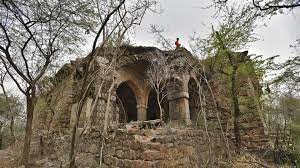
The Delhi government is about to renovate the 14th century monument Malcha Mahal.
- It was built in 1325 by the then Sultan Firoz Shah Tughlaq and was, for a long time, used as a hunting lodge.
- It later became the residence of the descendants of the Nawab of Awadh.
- It is said that it came to be known as ‘Wilayat Mahal’ after Begum Wilayat Mahal of Awadh, who claimed that she was a member of the royal family of Oudh.
- She was given the palace by the government in 1985.
- When she died by suicide in 1993, it came into the ownership of her daughter Sakina Mahal, and son Prince Ali Raza (Cyrus), who died in 2017, his sister passed away some years before that.
Digital India RISC-V Microprocessor (DIR-V) Program:
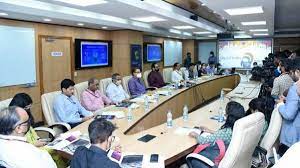
Ministry of Electronics & IT, Government of India announced the Digital India RISC-V Microprocessor (DIR-V) Program.
- Its overall aim is to enable creation of Microprocessors for the future in India, for the world and achieve industry-grade silicon & Design wins by December’2023.
- DIR-V will see partnerships between Startups, Academia & Multinationals, to make India not only a RISC-V Talent Hub for the World but also supplier of RISC-V SoC (System on Chips) for Servers, Mobile devices, Automotive, IoT & Microcontrollers across the globe.
- He also unveiled not only the Blueprint of the roadmap of design & implementation of the DIR-V Program with – SHAKTI Processor by IIT Madras and VEGA Processor by C-DAC but also the strategic Roadmap for India’s Semiconductor Design & Innovation to catalyze the semiconductor ecosystem in the country.
- Ministry of Electronics and IT is planning to join the RISC-V International as Premiere Board Member to collaborate, contribute and advocate India’s expertise with other global RISC-V leaders.
Nutrient Based Subsidy (NBS) Rates For Phosphatic and Potassic (P&K) Fertilizers:
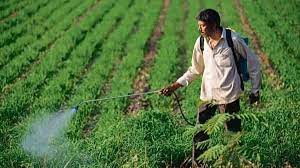
The Union Cabinet has approved the proposal of the Department of Fertilizers for Nutrient Based Subsidy (NBS) rates for Phosphatic and Potassic (P&K) fertilizers for Kharif Season – 2022 (from 01.04.2022 to 30.09.2022).
- Government is making available fertilizers, namely Urea and 25 grades of P&K fertilizers to farmers at subsidized prices through fertilizer manufacturers/ importers.
- The subsidy on P&K fertilizers is being governed by NBS Scheme w.e.f 01.04.2010.
- In view of steep increase in the international prices of fertilizers & inputs i.e. Urea, DAP, MOP and Sulphur, Government has decided to absorb the increased prices by increasing subsidy on P&K fertilizers including DAP.
- The subsidy would be released to fertilizer companies as per approved rates so that they can make available fertilizers to farmers at an affordable price than it would have been otherwise.
- The Union Government has decided to provide subsidy of Rs. 2501 per bag on DAP instead of existing subsidy of Rs.1650 per bag which is a 50% increase over the last year’s subsidy rates.
- The increase in the prices of DAP & its raw material is in the range of approx. 80%.
The Case Of Kesavananda Bharati v State Of Kerala:
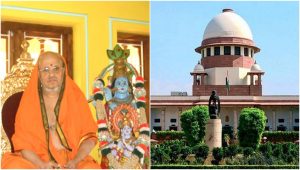
Exactly forty nine ago, on April 24, 1973, Chief Justice Sikri and 12 judges of the Supreme Court assembled to deliver the most important judgment in its history.
- The case of Kesavananda Bharati v State of Kerala had been heard for 68 days, the arguments commencing on October 31, 1972, and ending on March 23, 1973.
- By a 7-6 verdict, a 13-judge Constitution Bench ruled that the ‘basic structure’ of the Constitution is inviolable, and could not be amended by Parliament.
- The basic structure doctrine has since been regarded as a tenet of Indian constitutional law.
- In the early 1970s, the government of then Prime Minister Indira Gandhi had enacted major amendments to the Constitution (the 24th, 25th, 26th and 29th) to get over the judgments of the Supreme Court in RC Cooper (1970), Madhavrao Scindia (1970) and the earlier mentioned Golaknath.
- In RC Cooper, the court had struck down Indira Gandhi’s bank nationalisation policy, and in Madhavrao Scindia it had annulled the abolition of privy purses of former rulers.
- All the four amendments, as well as the Golaknath judgment, came under challenge in the Kesavananda Bharati case– where relief was sought by the religious figure Swami Kesavananda Bharati against the Kerala government vis-à-vis two state land reform laws.
- The Constitutional Bench ruled by a 7-6 verdict that Parliament should be restrained from altering the ‘basic structure’ of the Constitution.
- The court held that under Article 368, which provides Parliament amending powers, something must remain of the original Constitution that the new amendment would change.
- The court did not define the ‘basic structure’, and only listed a few principles — federalism, secularism, democracy — as being its part. Since then, the court has been adding new features to this concept.
- The ‘basic structure’ doctrine has since been interpreted to include the supremacy of the Constitution, the rule of law, Independence of the judiciary, doctrine of separation of powers, federalism, secularism, sovereign democratic republic, the parliamentary system of government, the principle of free and fair elections, welfare state, etc.
- Critics of the doctrine have called it undemocratic, since unelected judges can strike down a constitutional amendment.
- At the same time, its proponents have hailed the concept as a safety valve against majoritarianism and authoritarianism.
India Post Payments Bank:

The union cabinet has approved ₹820 crore financial support for India Post Payments Bank.
- IPPB was launched by the Prime Minister in 2018 with 100% equity owned by the Government of India.
- It is a payments bank of the Indian postal department which works through a network of post offices and nearly 4 lakh postmen.
- It is governed by the Reserve Bank of India (RBI).
- The bank has been set up with the vision to build the most accessible, affordable and trusted bank for the common man in India.
- The fundamental mandate of IPPB is to remove barriers for the unbanked and under-banked and reach the last mile.
- IPPB is committed to providing a fillip to a less cash economy and contribute to the vision of Digital India.
Section 144 CrPC:

The administration of Uttarakhand’s Haridwar district imposed prohibitory orders under Section 144 of the Code Of Criminal Procedure (CrPC), 1973 near the town of Roorkee.
- This law empowers the magistrate of any state or union territory in India to pass an order prohibiting the gathering of four or more people in a specified area.
- It is imposed in urgent cases of nuisance or apprehended danger of some event that has the potential to cause trouble or damage to human life or property.
- This order can be passed against a particular individual or general public.
- Section 144 places restrictions on handling or transporting any kind of weapon in the given jurisdiction.
- The maximum punishment for such an act is three years.
- According to the order under this section, there shall be no movement of public and all educational institutions shall also remain closed.
- Further, there will be a complete bar on holding any kind of public meeting or rallies during the period of operation of this order.
- It is deemed a punishable offence to obstruct law enforcement agencies from disbanding an unlawful assembly.
- It also empowers the authorities to block internet access in the region.
- The ultimate purpose of Section 144 is to maintain peace and order in the areas where trouble could erupt to disrupt the regular life.
- No order under this section can remain in force for a period of more than 2 months.
- Under the state government’s discretion, it can choose to extend the validity for two more months with the maximum validity extendable to six months.
- Once the situation becomes normal, Section 144 levied can be withdrawn.
India’s Labour Force Participation Rate:

Data from the Centre for Monitoring Indian Economy (CMIE) shows that India’s Labour Force Participation Rate (LFPR) has fallen to just 40% from an already low 47% in 2016.
- This suggests not only that more than half of India’s population in the working-age group (15 years and older) is deciding to sit out of the job market, but also that this proportion of people is increasing.
- According to the CMIE, the labor force consists of people who are 15 years or older, and belong to either of the following two categories:
- Are unemployed and are willing to work and are actively looking for a job.
- These two categories have people “demanding” jobs. This demand is what LFPR refers to.
- Thus, the LFPR essentially is the percentage of the working-age (15 years or older) population that is asking for a job.
- It represents the “demand” for jobs in an economy.
- It includes those who are employed and those who are unemployed.
- The Unemployment Rate (UER), which is routinely quoted in the news, is nothing but the number of unemployed (category 2) as a proportion of the labor force.
- In India, the LFPR is not only lower than in the rest of the world but also falling.
- In India, it has been sliding over the last 10 years and has shrunk from 47% in 2016 to just 40% as of December 2021.
World Economic Outlook: IMF
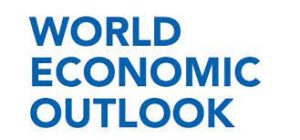
The latest edition of the International Monetary Fund’s (IMF) World Economic Outlook cut its forecast for India’s Gross Domestic Product (GDP) growth in FY 2022-23 to 8.2%, making it the fastest-growing major economy in the world, almost twice faster than China’s 4.4 %.
IMF’s Growth Forecast:
- It has also lowered India’s growth projection by 0.8 % points for 2022-23 from its previous forecast (9%) for the same period in 2021.
- In 2021, India registered a growth rate of 8.9 %.
- In 2023-24, India is estimated to grow at 6.9 %.
- With import bills rising due to high commodity and fuel prices, the IMF estimates India’s current account deficit to widen to 3.1% in FY 2022-23 from 1.6% in FY 2021-22.
- India was “suffering like many other countries because of the Russia –Ukraine war and negative terms of trade shock “due to higher food and energy prices weighing down trade balances.
- Additionally, external demand was also softening as the rest of the world’s growth was impacted.
Global Scenario:
- The IMF has projected global growth at 3.6 % in 2022 and 2023, 0.8 and 0.2 % lower than in the January 2022 forecast, respectively.
- A deceleration in global growth dampens India’s growth prospects especially because it would lead to lower demand for Indian exports.
- The downgrade largely reflects the war’s direct impacts on Russia and Ukraine and global spillovers.
- The recent lockdowns in key manufacturing and trading hubs such as Shenzhen and Shanghai (China) due to the resurgence of covid cases would likely compound supply disruptions elsewhere in the region and beyond.
First Human Case Of H3N8 Bird Flu:
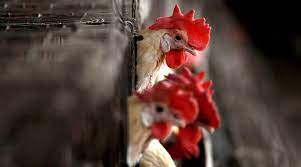
China’s National Health Commission (NHC) announced that a four-year-old boy was found to have been infected with the H3N8 variant of Bird Flu after developing several symptoms, including fever.
- H3N8 variant has previously been detected elsewhere in the world in horses, dogs, birds and seals.
- However, before this no human cases of H3N8 have been reported.
Bird Flue:
- Avian influenza—known informally as avian flu or bird flu—refers to “influenza caused by viruses adapted to birds”.
- Most avian influenza viruses do not infect humans, however, some, such as A(H5N1) and A(H7N9), have caused serious infections in people.
- There is no vaccine against H5N1.
- Most avian influenza viruses do not infect humans, however some, such as A(H5N1) and A(H7N9), cross the species barrier and cause disease or subclinical infections in humans and other mammals as well.
- The Avian (H5N1) virus subtype, a highly pathogenic virus, first infected humans in 1997 during a poultry epidemic outbreak in Hong Kong SAR, China.
Kwar Hydroelectric Project:
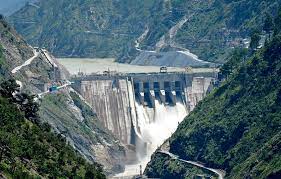
The Cabinet Committee on Economic Affairs (CCEA) has approved the 540-megawatt Kwar hydroelectric project on the Chenab in Kishtwar district of Jammu and Kashmir.
- Kwar Project is part of the Indus basin and would be one of at least four projects coming up in the district, including the 1,000 MWs Pakal Dul hydroelectric project and 624 MWs run-of-the-river Kiru hydroelectric project.
- Under the 1960 vintage Indus Water Treaty (IWT) between India and Pakistan, the two countries share the waters of six rivers in the Indus basin that flow through India towards Pakistan.
- Of these, India has complete rights over three eastern rivers – Sutlej, Beas and Ravi, while Pakistan has rights over the western rivers – Chenab, Jhelum, and Indus.
- The Kwar project will be implemented by Chenab Valley Power Projects Private Ltd (CVPPL), a joint venture company between NHPC Ltd and Jammu & Kashmir State Power Development Corporation (JKSPDC).
- The project is expected to generate 1975.54 million units in a 90% dependable year.
- The construction activities of the Project would result in direct and indirect employment of about 2,500 people.
What Is A Heatwave?
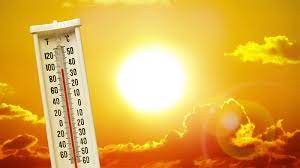
A heatwave has gripped the Vidarbha and Marathwada regions of Maharashtra. This is the fourth heatwave in the last two months, and the second in April. In fact, on April 26, Vidarbha was the hottest region in the country.
Heatwave:
- A region is considered to be under the grip of a heatwave if the maximum temperature reaches at least 40 degrees Celsius or more in the plains and at least 30 degrees Celsius or more in hilly regions.
- When the maximum temperature departure ranges between 4.5 and 6 degrees, the India Meteorological Department (IMD) declares a heatwave.
- A severe heatwave is declared when the recorded maximum temperature of a locality departure from normal is over 6.4 degrees Celsius.
- Also, if an area records over 45 degrees and 47 degrees Celsius on any given day, then the IMD declares heatwave and severe heatwave conditions, respectively.
- The lack of pre-monsoon showers has also led to an increase in the overall maximum temperature. Maharashtra recorded 63 per cent deficient rainfall from March 1 to April 26.




